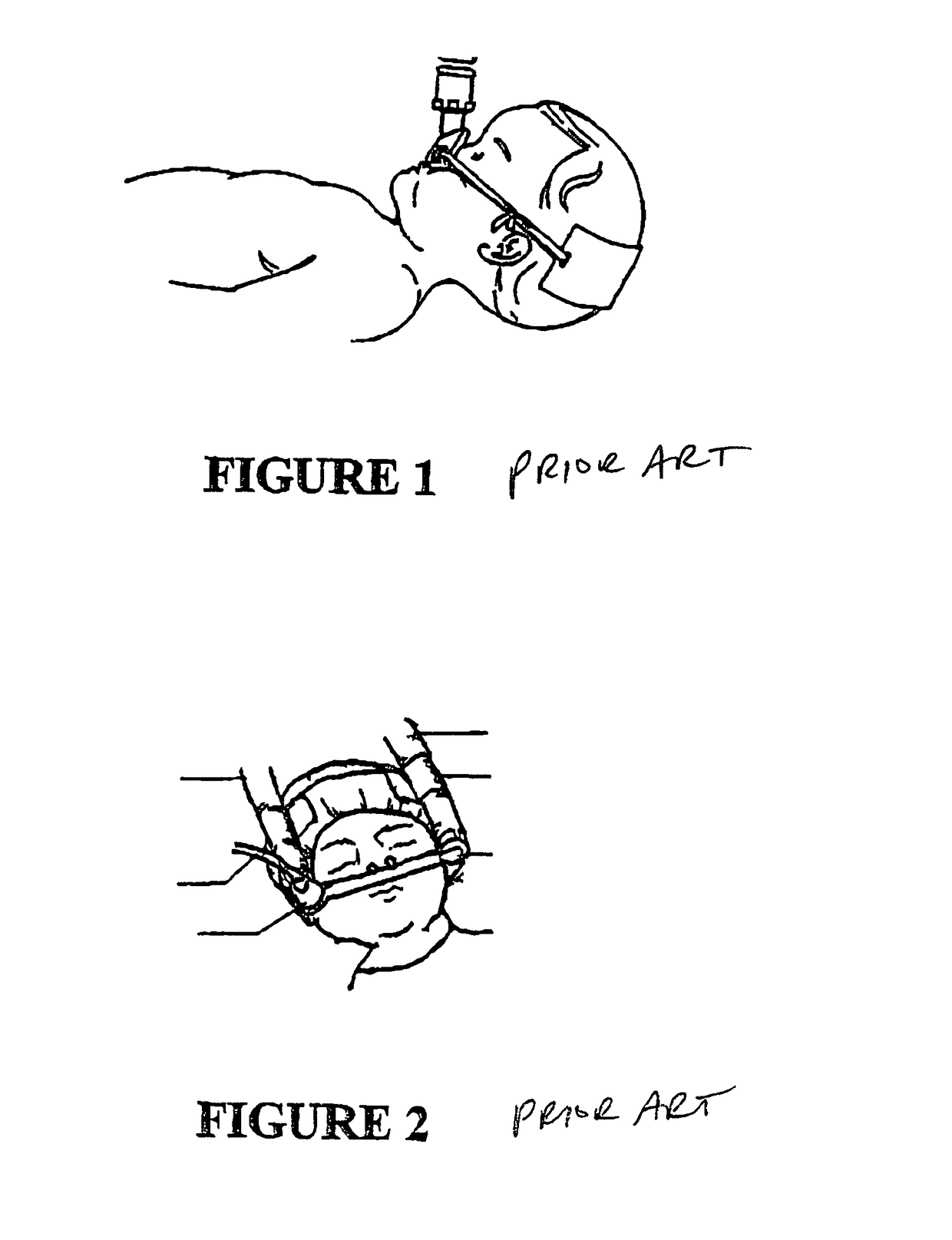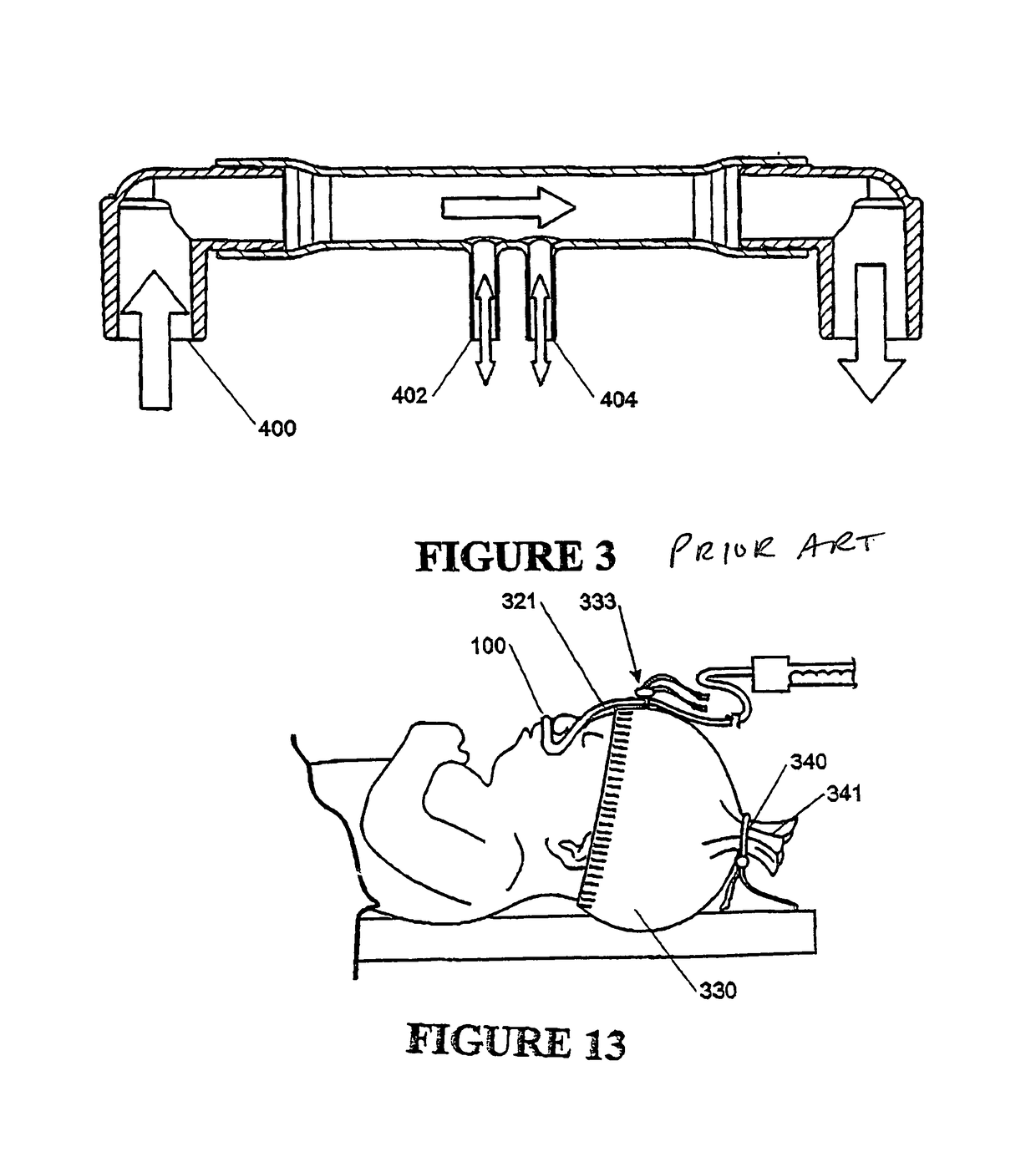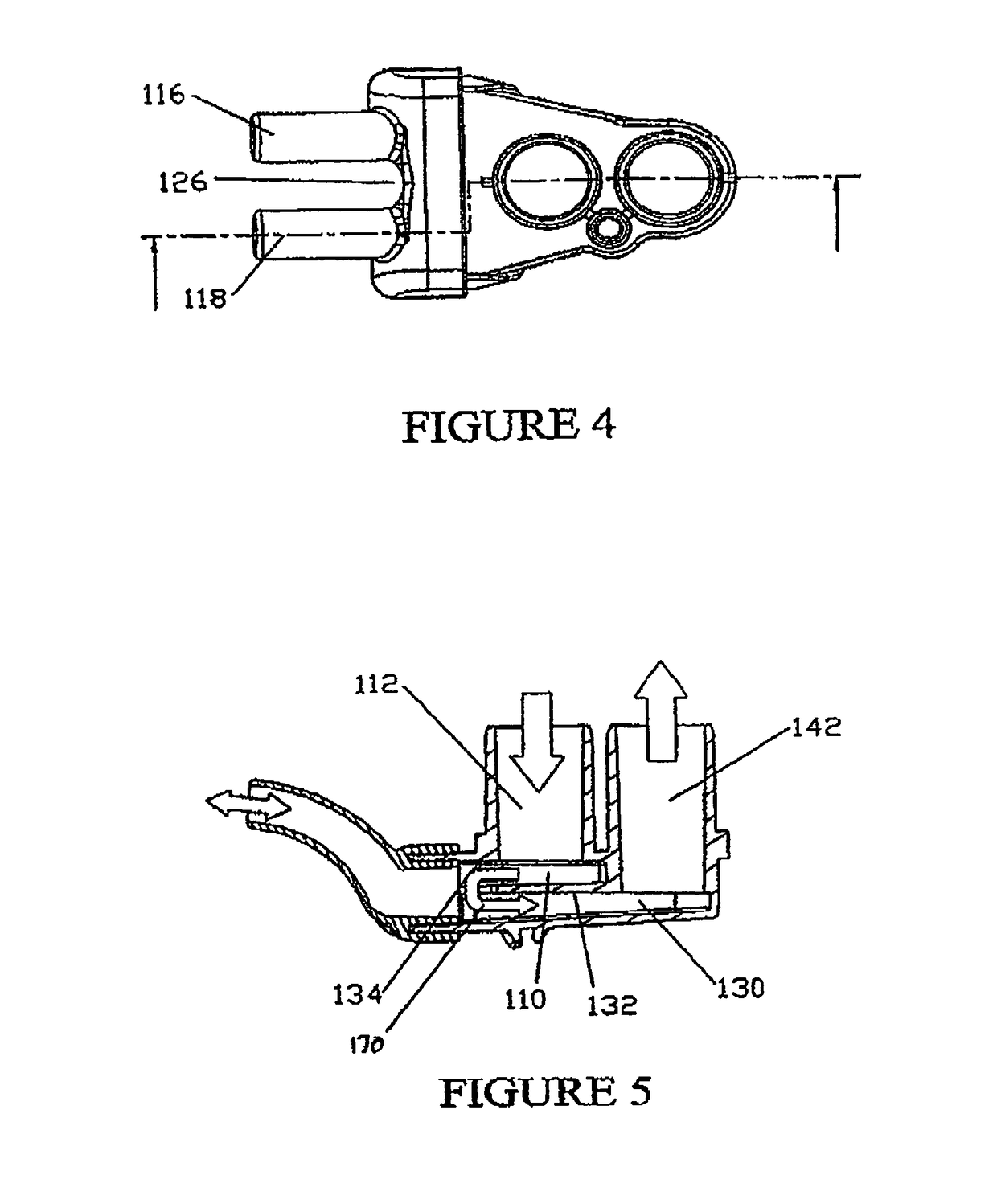Breathing assistance apparatus
a technology of nasal devices and breathing chambers, which is applied in the field of nasal cannulae, can solve the problems of nasal devices dislodging from the breathing cavity, conventional cannulas not providing a proper seal around the nares, and deemed uncomfortable by patients, and achieves the effect of low resistan
- Summary
- Abstract
- Description
- Claims
- Application Information
AI Technical Summary
Benefits of technology
Problems solved by technology
Method used
Image
Examples
Embodiment Construction
[0042]Referring now to FIG. 11 in which a typical application is depicted. A humidified Continuous Positive Airway Pressure (CRAP) system is shown in which a patient 19 is receiving humidified and pressurised gases through a nasal cannula 100 connected to a inhalatory conduit 21. It should be understood that the present invention, however, is not limited to the delivery of CPAP gases but is also applicable to other types of gases delivery systems. Inhalatory conduit 21 is connected to the outlet 12 of a humidification chamber 10 which contains a volume of water 15. Inspiratory conduit 21 may contain heating means or heater wires 20 which heat the walls of the conduit to ensure a constant humidity profile along the conduit and therefore reduce condensation of humidified gases within the conduit. As the volume of water 15 within humidification chamber 10 is heated, water vapour begins to fill the volume of the chamber above the water's surface and is passed out of the humidification c...
PUM
 Login to View More
Login to View More Abstract
Description
Claims
Application Information
 Login to View More
Login to View More - R&D
- Intellectual Property
- Life Sciences
- Materials
- Tech Scout
- Unparalleled Data Quality
- Higher Quality Content
- 60% Fewer Hallucinations
Browse by: Latest US Patents, China's latest patents, Technical Efficacy Thesaurus, Application Domain, Technology Topic, Popular Technical Reports.
© 2025 PatSnap. All rights reserved.Legal|Privacy policy|Modern Slavery Act Transparency Statement|Sitemap|About US| Contact US: help@patsnap.com



